博文
Grassland Research | 兰州大学邱全胜教授 - 植物基因组编辑:CRISPR,碱基编辑,引导编辑及其它
||
Grassland Research | 兰州大学邱全胜教授:植物基因组编辑:CRISPR,碱基编辑,引导编辑及其它
![]() 草地研究GR --- Grassland Research草业科学领域国际学术期刊
草地研究GR --- Grassland Research草业科学领域国际学术期刊

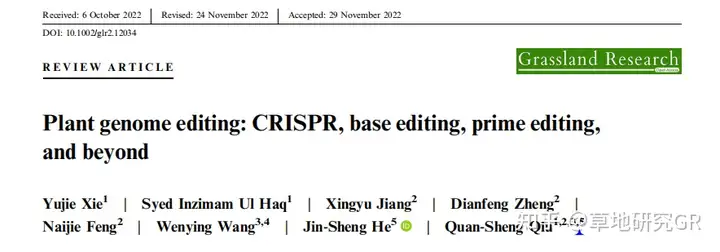
导读
CRISPR/Cas9系统是一种快速发展的基因组编辑技术,该技术通过对基因组的精准编辑,实现对作物的抗逆性、产量和品质等性状的精准改造,能极大促进农业生产的提质增产及优新农作物和牧草种质的创制。本文综述了植物基因组编辑技术的发展与应用,概述了CRISPR/Cas9技术的基本原理,并进一步介绍了为提高基因组编辑的精确性与编辑效率,而开发的基于CRISPR的新型基因组编辑技术,包括可实现单碱基替换的碱基编辑(Base editing)技术和可实现DNA序列的小片段插入缺失、DNA序列的小片段替换以及碱基替换的引导编辑(Prime editing)技术。同时,对近年来为优化引导编辑而发展出的一些衍生技术进行了评估。
图表

FIGURE 1:CRISPR/Cas9‐mediated genome editing. The Cas9 protein interacts with the sgRNA and forms a DSB at the PAM sequence of genomic DNA. DSB is repaired by NHEJ or HDR. A random insertion or deletion into the genome is introduced during NHEJ. A donor sequence that has homology arms with the DSB site is used in HDR to integrate precise mutations. Cas9, CRISPR‐associated protein 9; CRISPR, clustered regularly interspaced short palindromic repeats; DSB, double‐strand breaks; HDR, homology‐directed repair; NHEJ, nonhomologous end joining; PAM, protospacer adjacent motif; sgRNA, single guide RNA.
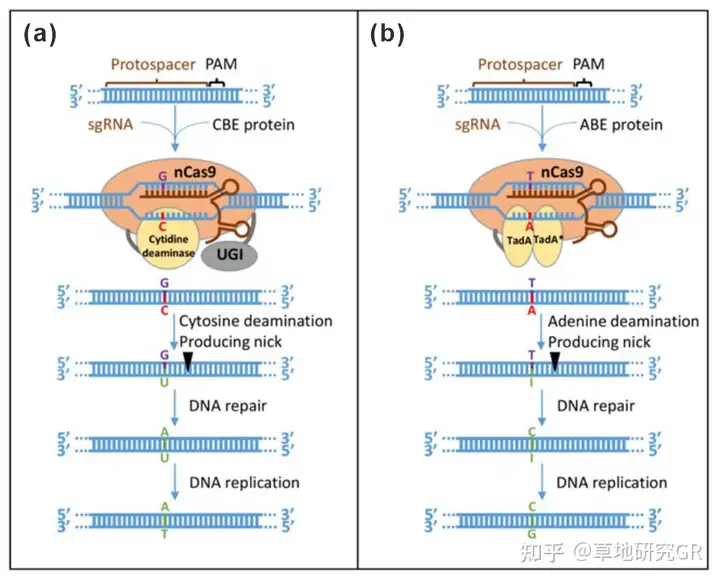
FIGURE 2:Schematic illustration of base editing. (a) C‐ o‐T base editing. CBE is nCas9 (orange) fused to cytidine deaminase (yellow) and UGI (gray). CBE combines with sgRNA (brown) to target a specifific DNA sequence. Cytidine deaminase changes C to U, and nCas9 nicks a single strand. UGI impedes U excision. Finally, C–G is changed into T–A through DNA repair and replication. (b) A‐ o‐G base editing. ABE is nCas9 (orange) fused to TadA‐TadA* (yellow). ABE combines with sgRNA (brown) to target a specifific DNA sequence. TadA‐TadA* changes A to I, and nCas9 nicks a single strand. Finally, A–T is changed into G–C through DNA repair and replication. ABE, adenine base editor; CBE, cytosine base editor; nCas9, Cas9 nickase; TadA, transfer RNA adenine deaminase; TadA*, evolved TadA variant; UGI, uracil glycosylase inhibitor.
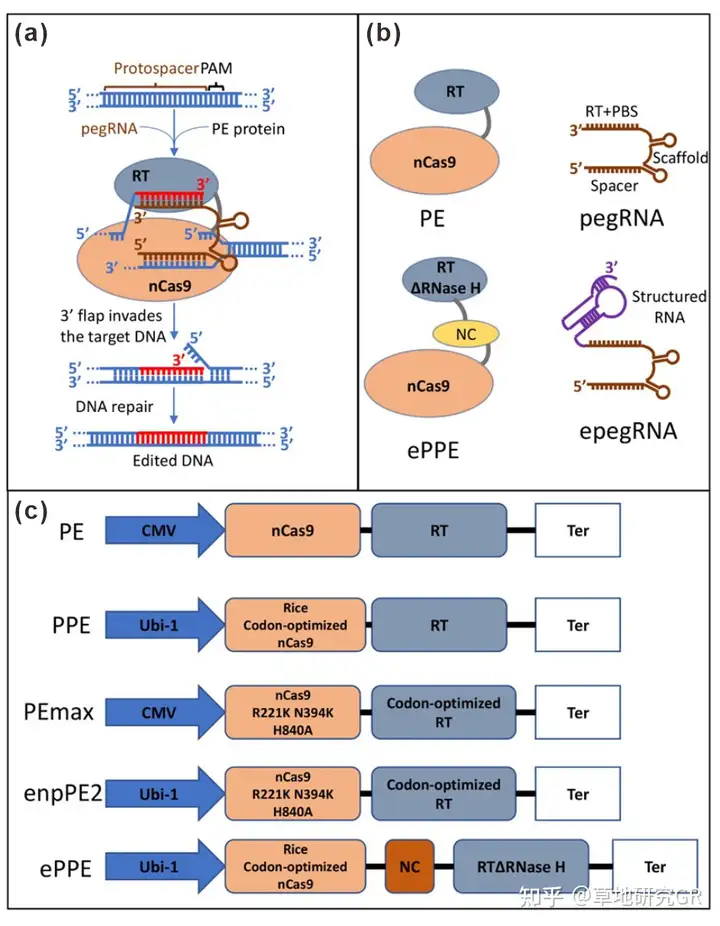
FIGURE 3: Prime editing and prime editing‐derived techniques. (a) Schematic illustration of prime editing. PE protein consists of the nCas9 domain (orange) and RT domain (gray); PE protein andpegRNA (brown) combined into a PE/pegRNA complex. PE/pegRNA complex recognizes protospacer and PAM, binds to target DNA, and nicks PAM‐containing strand while synthesizing a single strand containing edits (red). A 3′‐flap containing edits invades the target DNA, while a 5′‐flap containing original DNA is excised. A DNA repair process results in edited DNA. (b) Structural differences between PE and ePPE and between pegRNA and epegRNA. The PE protein consists of the nCas9 domain (orange) and the RT domain (gray), while the ePPE protein adds a VC protein (golden) and optimizes RT to RTΔRNase H. pegRNA is composed of a spacer, scaffold, RT template, and primer binding site (RT + PBS), while epegRNA adds an additional structured RNA in the 3′‐end, preventing the degradation. (c) Optimized prime editors: PE; PPE; PEmax; enpPE2 and ePPE. enpPE2, enhanced plant prime editor 2; ePPE, engineered plant prime editor; nCas9, a nicking Cas9; PAM, protospacer adjacent motif; PE, prime editing; pegRNA, a prime editing guide RNA; PPE, plant prime editor; RT, reverse transcriptase.
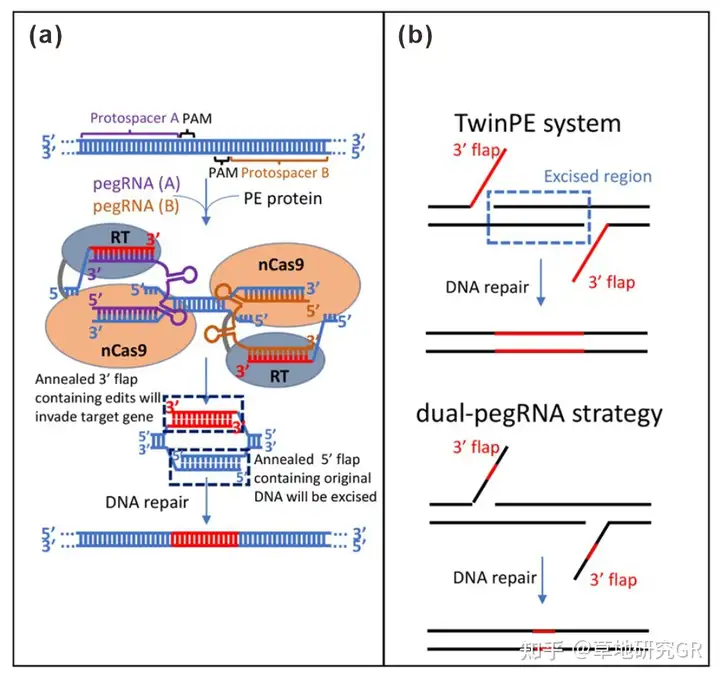
FIGURE 4: TwinPE system and dual‐pegRNA strategy. (a) In the TwinPE strategy, pegRNAs in trans are generated at similar editing sites, which bind to PE protein to form a PE/pegRNA complex. PE/pegRNA complexes nick target DNA and synthesized complementary 3′‐flap. The 3′‐flap containing edits invades the target gene, and the 5′‐flap containing original DNA is excised. Finally, edits are installed in the target DNA by DNA repair. (b) Design and edits for the TwinPE and dual‐pegRNA strategies. The edits are marked as red lines. The TwinPE system uses complementary 3′‐flaps containing edits to hybridize with target DNA, eliminating excised regions (frames with dotted lines), which are then repaired by DNA, resulting in edited DNA. The dual‐pegRNA strategy involves a 3′‐flap containing small edits that invade the target gene and install small edits by DNA repair. PE, prime editing; pegRNA, a prime editing guide RNA.

扫码查看原文
原文链接:https://onlinelibrary.wiley.com/doi/10.1002/glr2.12034
内容来源:Grassland Research(草地研究)Early View(投稿:2022-10-06;接收:2022-11-29;刊发:2022-12-29)
DOI: https://doi.org/10.1002/glr2.12034
引用格式:Xie, Y., Haq, S. I. U.,Jiang, X., Zheng, D., Feng, N., Wang, W.,He, J.‐S., & Qiu, Q.‐S. (2022). Plant genome editing: CRISPR, base editing, prime editing,and beyond.Grassland Research, 1(4), 234–243.
文章信息编译者:邱全胜 兰州大学生命科学学院 教授
说明:该文仅代表编译者对论文的理解,如需参考和引用相关内容,请查阅原文。
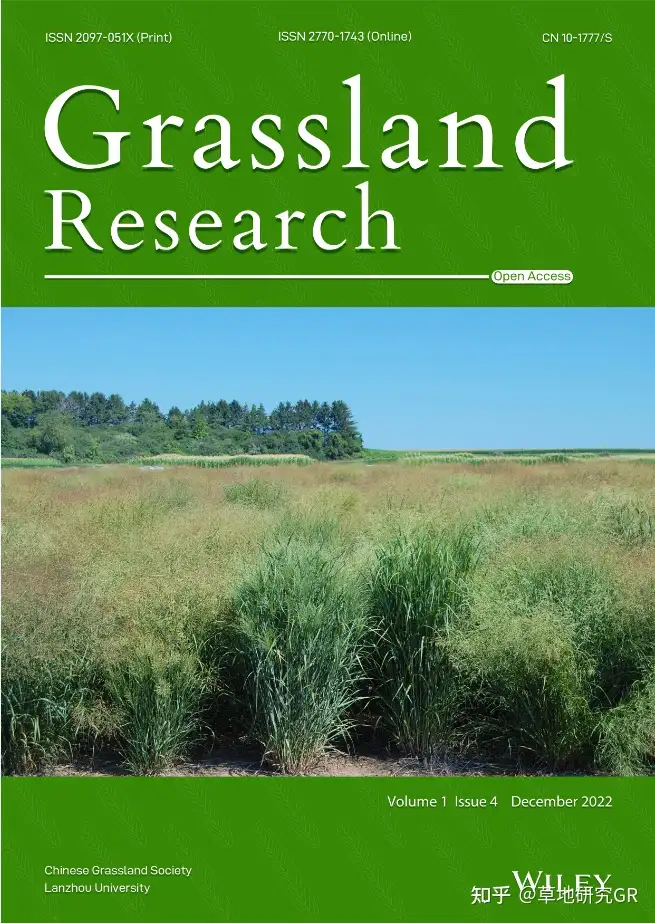
期刊介绍
Grassland Research是我国草业科学领域第一本国际学术期刊,季刊,由中国草学会和兰州大学共同主办。该刊受中国科技期刊卓越计划高起点新刊项目支持,由国际出版集团John Wiley & Sons Australia, Ltd.提供出版及宣传服务,于2022年正式出版。
Grassland Research论文刊发范围广,综合性强。从分子到全球变化层面,全维度聚焦草业科学及其在人类可持续发展中的作用。期刊将刊登天然草原,栽培草地、草坪和生物能源作物,以及草地生态系统三大板块的基础性和应用性研究成果、综述、论点等类型的文章。优先考虑发表青年学者优秀研究成果,期待成为青年科学家喜爱的国际学术交流主阵地。
在创刊前三年,Grassland Research将免收版面费,以OA形式通过全球化出版平台Wiley Online Library出版。
排版|王新宇
执行编辑 | 范思佳
审核|彭京伦 武艳培 王新宇
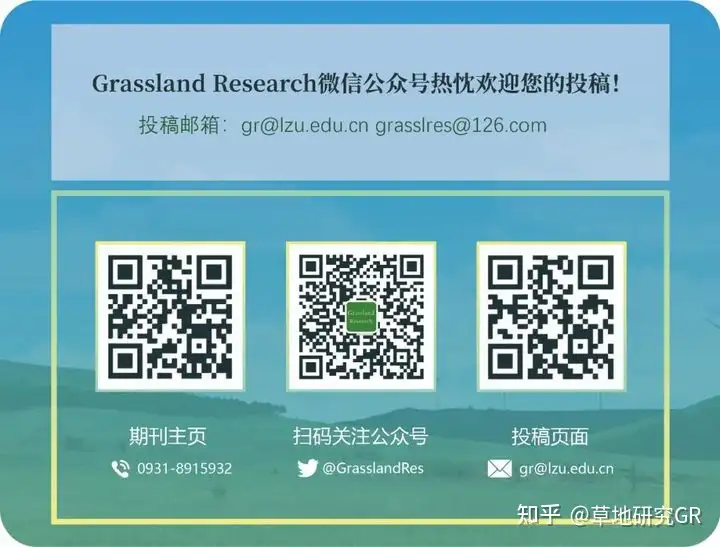
https://blog.sciencenet.cn/blog-3568995-1402871.html
上一篇:Grassland Research | 混播放牧地的营养和植被组成特性在整个奶牛放牧季中的季节性变化
下一篇:Grassland Research | 青岛农业大学王增裕教授:CRISPR/Cas9技术在牧草中的应用